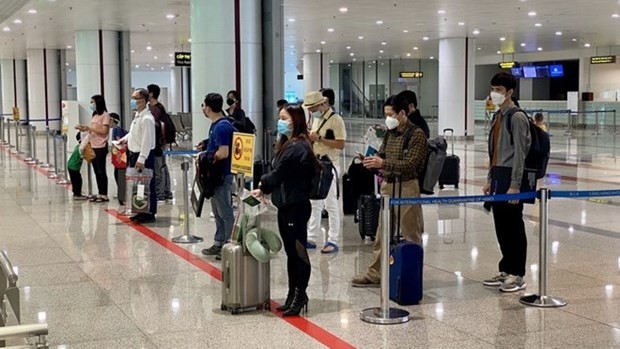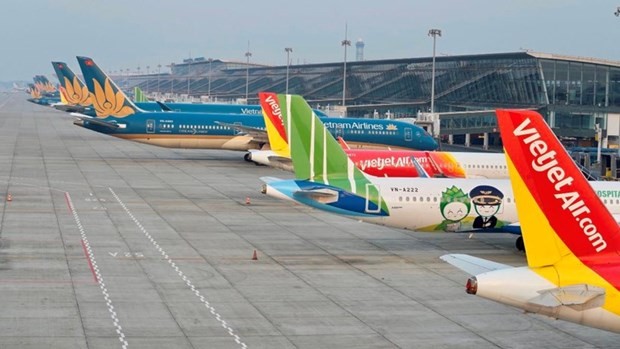 |
| Flight passengers at Noi Bai International Airport. Photo: VNA |
Vietnam will have a total of 30 airports by 2030 including 14 serving international flights, according to a draft plan that the Civil Aviation Authority of Vietnam has submitted to the Ministry of Transport recently.
The international airports are Van Don, Cat Bi, Noi Bai, Tho Xuan, Vinh, Phu Bai, Da Nang, Chu Lai, Cam Ranh, Lien Khuong, Long Thanh, Tan Son Nhat, Can Tho, and Phu Quoc.
The 14 airports serving only domestic flights are Lai Chau, Dien Bien, Sa Pa, Na San, Dong Hoi, Quang Tri, Phu Cat, Tuy Hoa, Pleiku, Buon Ma Thuot, Phan Thiet, Rach Gia, Ca Mau, and Con Dao.
Two military airports – Thanh Son and Bien Hoa – will be converted to use for both military and civil purposes.
The draft plan still keeps the Hai Phong International Airport project which was approved in the Prime Minister’s Decision No 640/QD-TTg dated April 28, 2011.
By 2050, Vietnam expects to have 33 airports including 14 international airports – Van Don, Hai Phong, Noi Bai, Tho Xuan, Vinh, Phu Bai, Da Nang, Chu Lai, Cam Ranh, Lien Khuong, Long Thanh, Tan Son Nhat, Can Tho and Phu Quoc. There will also be 19 domestic airports, including Lai Chau, Dien Bien, Sa Pa, Cao Bang, Na San, Cat Bi, Dong Hoi, Quang Tri, Phu Cat, Tuy Hoa, Pleiku, Buon Ma Thuot, Phan Thiet, Rach Gia, Ca Mau, Con Dao, Bien Hoa, Thanh Son and the second airport in the southeast, south region of Hanoi.
CAAV will continue to study, survey, and evaluate the possibility of converting some existing military airports into dual-use facilities including Yen Bai airport in Yen Bai province, and Gia Lam airport in Hanoi. The conversion will be reported to the Prime Minister for consideration when all necessary conditions are met.
In particular, this draft plan reflects CAAV’s openness to the new civil airports.
The agency proposes to continue studying, surveying and evaluating the possibility of building airports in provinces that are located in key positions in defense and security and with potential for tourism development but have no military airport. These include Ha Giang, Tuyen Quang, Ha Tinh, Kon Tum, Quang Ngai, Binh Thuan, Khanh Hoa, Dak Nong and Tay Ninh.
 |
| Illustrative photo. Source: VNA |
The Transport Engineering Design Incorporated (TEDI) – consultant for the national airport development planning – proposes that the capacity of Long Thanh airport by 2030 is 25 million passengers per year. The capacity of Long Thanh Airport would then increase to 100 million passengers by 2050. The Tan Son Nhat airport is to have a maximum capacity of 50 million passengers yearly.
Bien Hoa airport is expected to handle 5 million passengers yearly by 2030, and up to 10 million passengers by 2050.
Meanwhile, the Transport Department of Ho Chi Minh City has proposed building two more bridges to enhance transport connectivity between the southern economic hub and its neighbour Dong Nai province.
Dong Nai, the eastern gateway of HCM City, is separated from the southern economic hub by rivers such as Dong Nai, Long Tau, Dong Tranh and Thi Vai. Therefore, bridges play an important role in connecting these two localities, especially when the Long Thanh International Airport in Dong Nai province is put into operation.
According to the latest report by Fitch Solutions, Vietnam’s international tourism market will thrive in the 2023-2026 period, reaching USD 13.2 billion in 2026 with 22 million foreign visitors.



